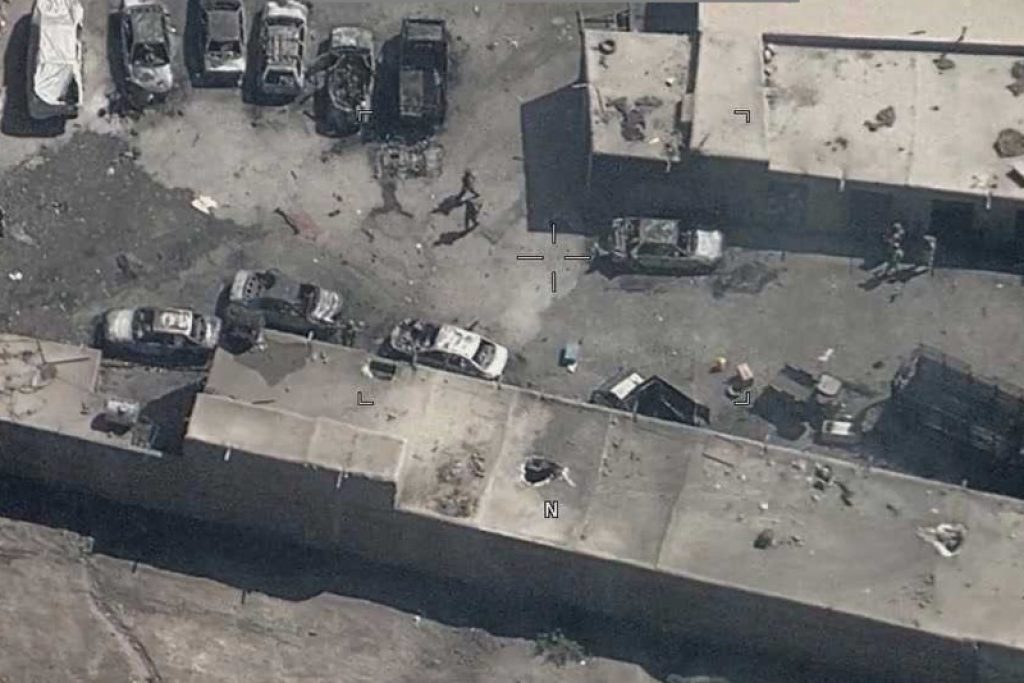
The Islamic State’s arm in Afghanistan conducted a mortar attack in Kabul as President Ashraf Ghani was delivering a speech yesterday. It appears that there were relatively few casualties, because Afghan forces quickly mobilized to shut down the operation.
In a press release today, NATO’s Resolute Support touts the efficacy of Afghanistan’s Crisis Response Unit 222 and the Afghan Air Force, both of which were called in to respond.
“The speed and professionalism with which Afghan National Defense and Security Forces [ANDSF] neutralized this senseless terrorist attack undoubtedly saved further lives and removed a dangerous threat to the people of Kabul and Afghanistan,” US Air Force Maj. Gen. “Buck” Elton, NATO Special Operations Component Command-Afghanistan commander, said in a statement.
Resolute Support says that Crisis Response Unit 222 rapidly deployed and “began clearing compounds, while Afghan Air Force MD-530 helicopters engaged and killed an attacker firing mortar rounds from the back of a truck.” Two other Islamic State jihadists “barricaded themselves behind a vehicle and began firing at National Directorate of Security responders.” The MD-530s “killed one of” them “with a precision strafing run, while Crisis Response Unit 222 later engaged and killed the remaining terrorists.”
However, while the attack wasn’t a major operational success for the Islamic State, security forces were forced to play defense once again inside the Afghan capital.
The incident began at about 9am local time, according to TOLOnews. Resolute Support’s account doesn’t say how long Afghan forces and the jihadists battled, but according to TOLOnews the firefight “lasted until about 12 noon.” That means it took approximately three hours for Afghan forces to subdue the team of nine Islamic State attackers, five of whom were apprehended and four others killed.
The Islamic State’s mortar team also had the time to set up and fire approximately 30 mortar rounds over a 30-minute period, which means they were able to operated undetected until the mortars started landing.
The so-called caliphate’s men regularly strike targets inside Kabul, including government facilities. Since the beginning of the year, the Islamic State’s jihadists have struck the Afghan Ministry of Rural Rehabilitation and Development twice, Afghanistan’s ministry of interior, and a gathering of the pro-government Afghan Ulema Council, among other government-affiliated locations.
In July, an Islamic State suicide bomber struck just outside the Hamid Karzai International Airport in Kabul minutes after Gen. Abdul Rashid Dostum, Afghanistan’s first vice president, passed through the area on his way to a celebration in honor of his return to the country. Dostum is a controversial figure who has been accused of various crimes throughout his career.
According to the United Nations Assistance Mission in Afghanistan (UNAMA), the Islamic State’s attacks have become a leading cause of civilian casualties in and around Kabul as well. In addition to official targets, the jihadists regularly strike Shiite gatherings and other civilian-filled locales.
From one perspective, the Islamic State’s latest mortar assault wasn’t a success for the jihadists, as the number of casualties was limited and Afghan forces prevented them from doing more damage.
But Afghan forces have not been able to uproot the Islamic State’s Kabul attack network either, as Abu Bakr al Baghdadi’s loyalists continue to pose a threat.
from Long War Journal – FDD's Long War Journal https://ift.tt/2N8hcAI
via Defense News
No comments: